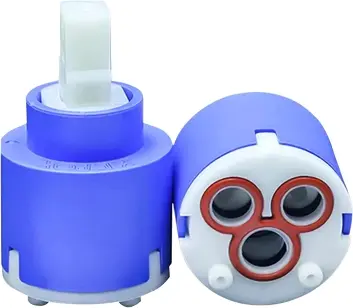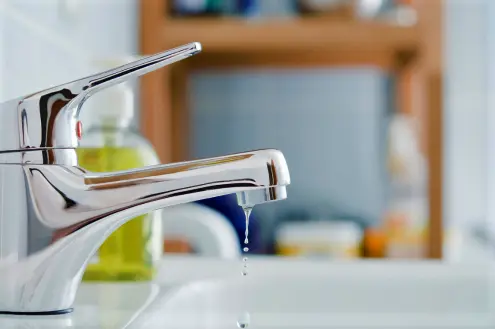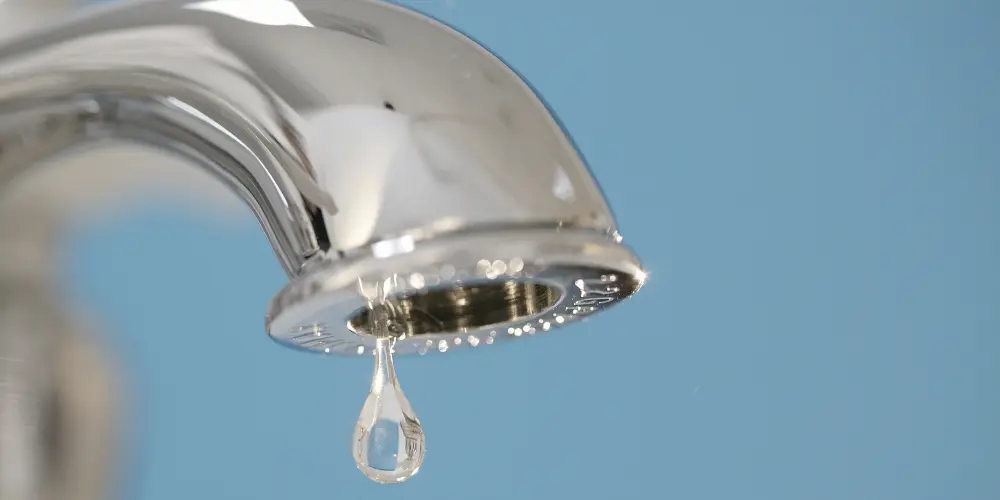Dealing with a leaky faucet can be a real headache when you don’t know what is the real cause of its leaking. You replace the faucet cartridge to stop its leaking but still faucet leaking after replacing cartridge. The continuous leaking is not good. If this happens to you then the cartridge is not the reason for the leakage. There are other leaking issues that we will address in this guide.
What Is a Cartridge?

A cartridge is a small part of the faucet that is used to control the flow of water. When you turn the handle, the cartridge start or stops the flow of water. The cartridge is generally made of plastic or brass material. According to the faucet design, cartridge comes in different sizes.
Compression and ceramic cartridges are famous to use with the faucet. Ceramic cartridges are made with advanced ceramic material and perform better than traditional compression cartridges.
Why Is Faucet Leaking After Replacing Cartridge?

After replacing the cartridge in your faucet, you may notice that it still leaks. This can be frustrating, as you may have thought that replacing the cartridge would solve the issue. Let’s see the common cause of this issue.
Loose Connections
To replace the bad cartridge, you need to remove the faucet’s part and change the cartridge and reattach the parts. But if you don’t tighten all connections properly, you may see leaking water through the gaps after replacing the faucet cartridge.
At the time of installing a new cartridge, you should follow the manufacturer’s instructions. Use the right tools to tighten the nuts and the handle. Double-check every connection to make sure all connections are tight before turning the water back on.
Improper Installation
When you install a new cartridge, make sure its size is the same as the old one. A wrong-size cartridge will cause improper installation and it leads to a leak from the faucet even if all connections are tight. You can find the right cartridge for the faucet through the faucet model.
While installing the new cartridge, ensure the new cartridge fits snugly and correctly into place. if the cartridge is small, it will create gaps around it and if the cartridge is big, it will be bent and won’t fit properly. Get a proper size cartridge to install it properly.
Water Pressure Issues
Water pressure is also important for a faucet to work without any leak. In some cases, after installing the right cartridge and replacing all damaged parts, the faucet still leaks, which means there is an issue with the water pressure.
If the water pressure is high, it will cause issues, and the faucet may leak. Due to high water pressure, water will flow through the cartridge quickly and result in a leak. Cartridge won’t be able to handle too fast-moving water due to high water pressure.
To control the water pressure, you need to use the pressure-regulating valve to regulate the water pressure of the faucet. With this valve, you can maintain the pressure of the water and prevent any leak or damage to the faucet.
Other Underlying Problems In The Faucet
While replacing the cartridge, look for other parts for wear and tear. If any part is damaged, it will cause a leak. If any part show sign of damage, replace it before installing a new cartridge.
One potential cause of a leaking faucet after cartridge replacement is a worn-out washer or valve seat. These components are located inside the faucet and can become worn or damaged over time, leading to leaks. If the washer or valve seat is worn out, water can flow around the cartridge and cause leaks, even if the cartridge itself is new.
Another cause of a leaking faucet after replacing the cartridge is a cracked or corroded pipe. Over time, pipes can become damaged due to wear and tear, exposure to chemicals or hard water, or other factors. If the pipe is cracked or corroded, water can leak through the gaps and cause leaks in the faucet, even if the cartridge has been replaced.
Leaks in a faucet can also be brought on by a broken valve. The valve, which regulates how much water flows through the faucet, might deteriorate or wear out over time. Incorrect valve operation can cause water to flow through the faucet even when it is shut off, which can cause leaks. To fix these problems, you need to open the faucet and replace its damaged parts.
Read also – Best Faucets To Deal With Hard Water
How Tight Should a Faucet Cartridge Be?
When you install a new faucet cartridge, it should be tight enough to prevent leaks. But it should not be tight enough that it becomes difficult to remove or damage it.
Before tightening make sure that the cartridge is seated and aligned properly at its place. A right-seated cartridge won’t create any leaks. Some cartridges may have alignment notches or markings to help with this.
To tighten the cartridge, you should use the right tool. When tightening the cartridge, you should apply firm, even pressure while turning the tool. When the cartridge is snugly fit in its place and you feel resistance, you should stop tightening it.
Should I Grease a Faucet Cartridge?
Yes, you should apply a thin layer of grease on the cartridge before installing it. Plumber grease is good for the cartridge. This grease increases the life of the cartridge. It reduces the wear and tear of the cartridge.
Clean any dirt or old grease from the cartridge and faucet body before applying the plumber’s grease to a faucet cartridge. Then, use the plumber’s grease to lightly lubricate the interior of the faucet body where the cartridge will be inserted as well as the O-ring on the cartridge. Use only silicone-based plumber’s grease, since other varieties may harm the cartridge or speed up its deterioration.
After applying the plumber’s grease, place the cartridge within the body of the faucet and tighten it in accordance with the manufacturer’s recommendations. Make sure to remove any extra grease that could have leaked out during installation by wiping it down.
Read also – Leaky Outdoor Faucet When Turned On? Learn How to Fix It

James Lewis is a seasoned plumber and faucet enthusiast who shares his expertise on Faucetsavvy.com. With over 15 years of experience in the plumbing industry, he’s passionate about helping homeowners find the perfect faucet for their needs. He’s also dedicated to empowering DIY enthusiasts with the plumbing knowledge and skills needed to repair and maintain their faucets.
Recommended By Faucetsavvy's Team
Best Kitchen Faucets of 2025: Sleek, Durable & Worth Every Penny Check Our Review

